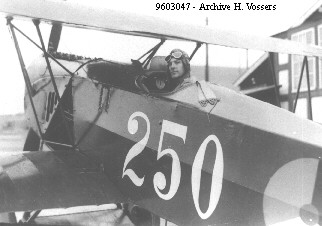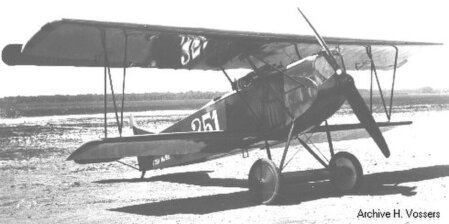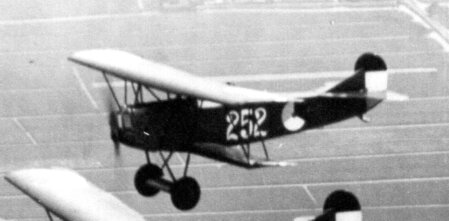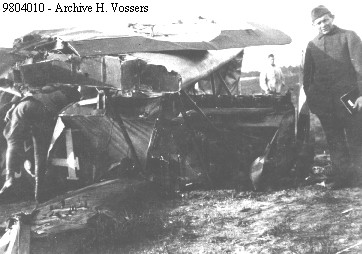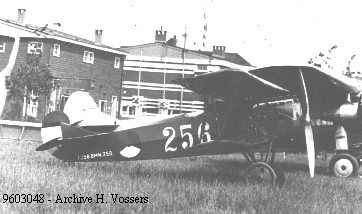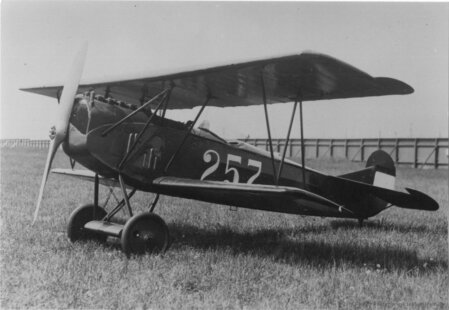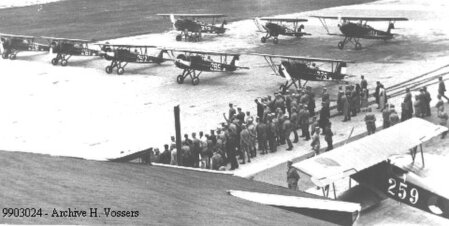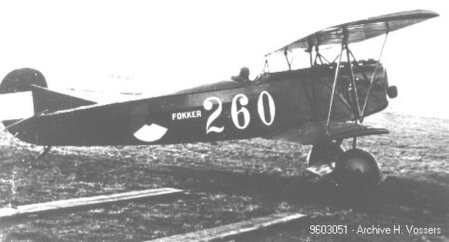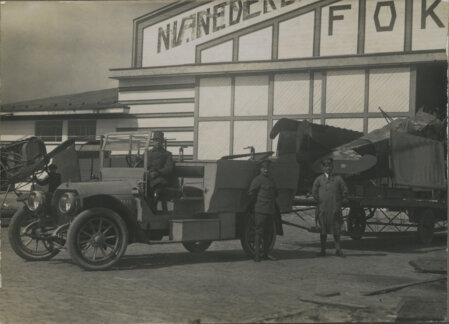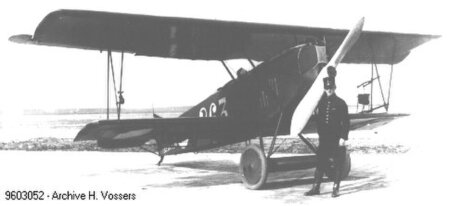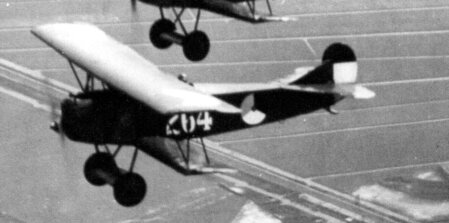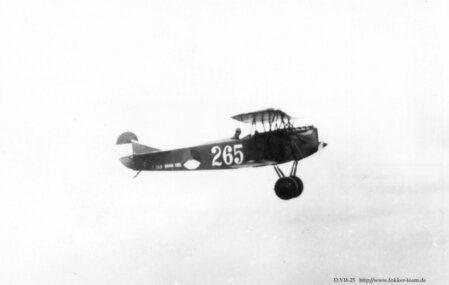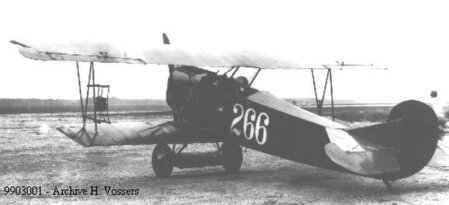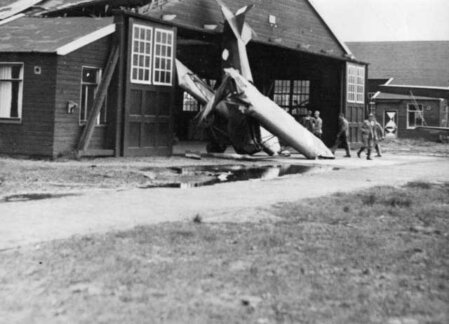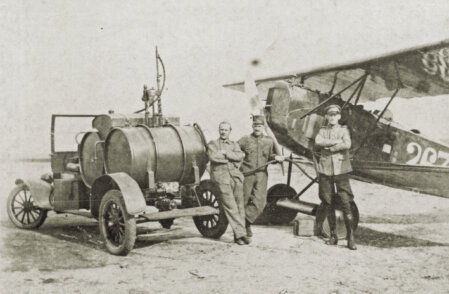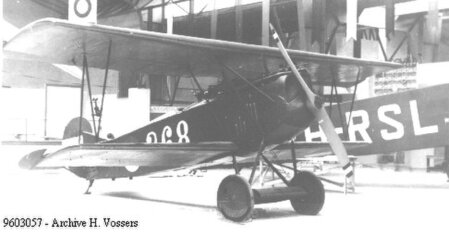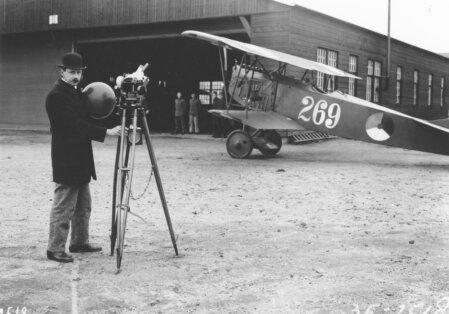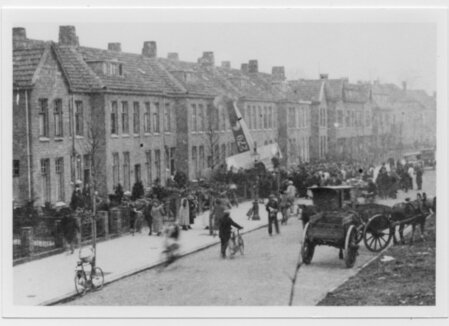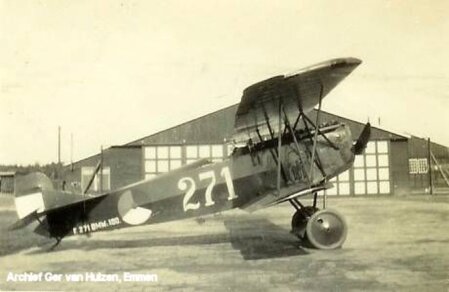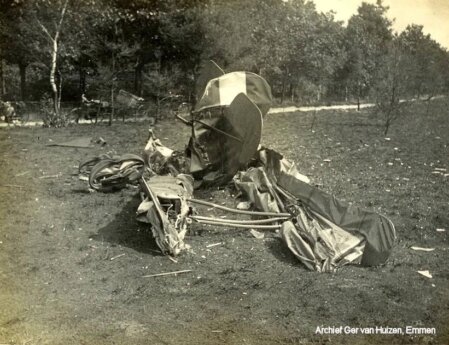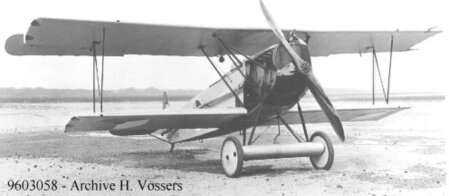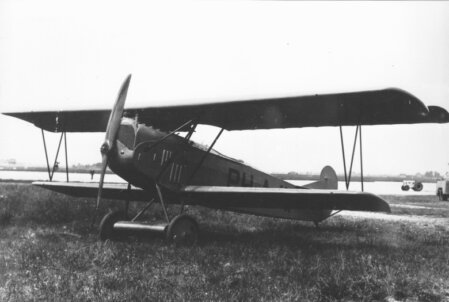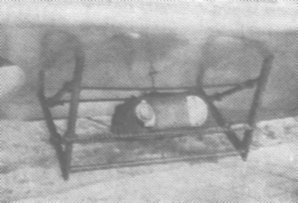250
| Date in service | Date out of service |
| May 17, 1920 | March 29,1938 |
251
In 1925 and 1926 the '251' had some damage from forced landings, but these were repaired. It was written off in 1929 because of 'severe damage'.
Usable parts were stored.
| Date in service | Date out of service |
| May 22, 1920 | May 28, 1929 |
252
The '252' was written off after a forced landing.
| Date in service | Date out of service |
| May 21, 1920 | May 18, 1925 |
253
The '253' rolled into a C.I in 1928, which damaged both aircraft. It was flown again at the end of January 1929, but was probably written off in 1930.
| Date in service | Date out of service |
| May 25, 1920 | 1930 |
No picture available
254
After a crash, The ‘254’ was withdrawn from service.
| Date in service | Date out of service |
| May 4, 1920 | May 28, 1934 |
255
The ‘255’ did not have a long service life, as it was withdrawn from service after a crash. Parts of the ‘255’ were used for building of the ‘270’.
| Date in service | Date out of service |
| May 14, 1920 | August 5 1920 |
No picture available
| Date in service | Date out of service |
| May 12, 1920 | August 7, 1935 |
256
During it’s service life, the ‘256’ had several minor accidents. All of these could be repaired. It was withdrawn because the fuselage was rejected.
257
During it’s service life, the ‘257’ had several minor accidents. All of these could be repaired.
| Date in service | Date out of service |
| May 21, 1920 | March 29, 1938 |
| Date in service | Date out of service |
| May 5, 1920 | October 16, 1935 |
258
During it’s service life, the ‘258’ had several minor accidents. All of these could be repaired. It was withdrawn because the fuselage was rejected.
No picture available
259
During it’s service life, the ‘259’ had several minor accidents. All of these could be repaired.
| Date in service | Date out of service |
| May 20, 1920 | March 29, 1938 |
260
During it’s service life, the ‘260’ had several minor accidents. All of these could be repaired.
The ‘260’ was, together with the ‘263’, sent to Iceland during the Second International Polar Year in 1932-1933.
| Date in service | Date out of service |
| May 14, 1920 | December 12, 1935 |
| Date in service | Date out of service |
| May 4, 1920 | September 17, 1922 |
261
The ‘261’ was damaged during landing in 1922, and withdrawn form service.
262
During it’s service life, the ‘262’ had several minor accidents. All of these could be repaired. It was withdrawn in 1931 after a bad landing.
| Date in service | Date out of service |
| May 14, 1920 | February 11, 1930 |
No picture available
| Date in service | Date out of service |
| June 3, 1920 | January 5, 1937 |
263
During it’s service life, the ‘263’ had several minor accidents. All of these could be repaired.
The ‘263’ was, together with the ‘260’, sent to Iceland during the Second International Polar Year.
264
The ‘264’ was withdrawn from service after an emergency landing in 1927.
| Date in service | Date out of service |
| June 14, 1920 | November 16, 1927 |
| Date in service | Date out of service |
| May 27, 1920 | October 25, 1933 |
265
The ‘265’ had some minor accidents during it’s service life, but was destroyed during a landing in 1933, and withdrawn from service.
266
During it’s service life, the ‘266’ had several minor accidents. All of these could be repaired. One is worth mentioning, as it was pushed against a hangar by a tornado on July 17, 1933.
It was withdrawn because the fuselage was rejected.
The ‘266’ that that is on display at the Nationaal Militair Museum at Soesterberg, The Netherlands is not the original '266'.
| Date in service | Date out of service |
| May 5, 1920 | December 12, 1935 |
| Date in service | Date out of service |
| June 25, 1920 | 1921 |
| Date in service | Date out of service |
| June 8, 1920 | March 29, 1938 |
268
The ‘268’ had one accident in 1922, which could be repaired. It was withdrawn in 1938.
269
The ‘269’ was heavily damaged after flying against an electricity-tower in 1927, and was withdrawn from service.
| Date in service | Date out of service |
| May 21, 1920 | December 9, 1927 |
| Date in service | Date out of service |
| April 8, 1921 | March 5, 1936 |
270
The ‘270’ was built by the LVA workshop using parts of the ‘255’ and ‘267’. It had some accidents during it’s service life, but all of these could be repaired. It was withdrawn in 1936.
On february 9, 1926 the ‘270’ was flown by sgt. Rombout on the daily weatherflights from the LVA. He lost his way because of the fog, and when he tried to land, he ended tail up against a house in Tilburg.
271
The ‘271’ was build by the LVA, probably using parts of crashed D.VII’s. It had some minor accidents during it’s service life. It crashed on the 15th of july 1930, after it’s pilot Lt. Elout fell out of the cockpit during a looping.
He was the only person being killed flying a Dutch LVA D.VII, while this type was in service.
| Date in service | Date out of service |
| 1926 | July 15, 1930 |
F.600
Fokker D.VII ‘F.600’ as used by Lt. Versteegh.
This was a converted two-seat D.VII, with larger wings, a longer exhaust pipe, and a fuel tank between the weels.
In 1934 it was given back to Fokker and became the PH-AJW on the Dutch civil register. It's registration certificate expired in 1937 and it was cancelled from the register on 30 June 1937.
The second International Polar Year
During the second polar year, which was held from September 1932 to September 1933, the Dutch set up an ‘aerological’ station at Reykjavik, Iceland. From this station, two Dutch Fokker D.VII’s made flights every day, to record atmospheric pressure, temperature and humidity with a device which was mounted beneath the wing. Therefore, the pilot had to climb to an altitude of 5.000 to 6.000 meter. The Dutch were chosen for this task, because they had made more than 6.000 meteorological flights between 1919 and 1932, without any personal accident
Things were not going to be easy for the pilots Van Giessen and Bosch and their mechanic Van Der Leden. In the first place, they had trouble finding a suitable landing place in the neighborhood of Reykjavik. At last they found two parallel fields, which were seperated by a ditch. It was not possible to fill it in, so they made a bridge over it, approximately 40 meters long. In that way they created a field 440 meters long and 100 meters wide. Since the D.VII did not have brakes, one can imagine that every landing was quite an experience. Still, there never was an accident.
The flying itself was also quite difficult. The D.VII with its open cockpit did not have any kind of heating. Once, a temperature of -63 degrees Celcius was measured at a height of 6.000 meters. And they had the problem of ice on the wings, and no de-icers. A typical flight to the desired height, would take 40 minutes. After that, they had to descend through the clouds, which was very dangerous. In the neighborhood of Reykjavik, the mountains are 1.000 meters high. So, mostly they would turn to the west, to come out of the clouds above the sea, and fly backt to the base. Since the endurance of the D.VII was only 1 hour and 15 minutes, this was also a hazardous operation.
In total, there were 470 flight made. From these, 330 flights had an average height of 5605 meters, and the maximum height reached was 6704 meters. This was a record for Iceland. Total flying time was 560 hour.
When Lindbergh visited Iceland on his flight to Copenhagen (Denmark), he asked if he could fly the D.VII. Of course this was granted, and he stepped into the cockpit to receive instructions. Then there was a conversation like this:
Linbergh: “Where is your blind-flying equipment ?”
Answer: “We don’t have any.”
Lindbergh: “So how do you go through the clouds ?”
Answer: “Well, on our feeling.”
Lindbergh: “Where is your radio ?”
Answer: “We don’t have a radio.”
Lindbergh: “I hope you don’t mind, but I am not not going to make this flight.”
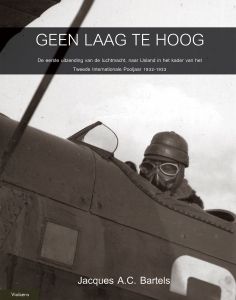
In the Dutch publication “Geen laag te hoog” (ISBN 978-90-8616-127-0) by Jacques A.C. Bartels you can read the whole story of the Dutch contribution.
